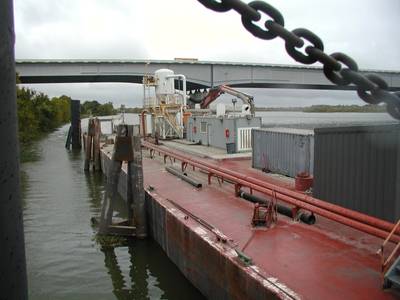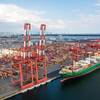Bryan Day, executive director of the Little Rock Port Authority, weighs in on President Donald Trump’s proposed infrastructure plan, calling for U.S. policymakers to consider inland waterways and ports in America’s infrastructure plan.
President Donald Trump and members of Congress continue to discuss plans for a major infrastructure spending plan for our country. With calls from leaders from across the country, members of the federal government are coming together to embrace the importance of maintaining America’s infrastructure. Although details have not been finalized on a final infrastructure plan, there is growing consensus that something must be done to retain America’s competitive advantage on the global stage.
In 2015, the World Economic Forum’s Global Competitiveness Report compared America’s infrastructure to other countries and developing nations. Among other things, the report looked at the quality and availability of roads, railroads, ports, airports and utilities. In terms of overall infrastructure the U.S. ranks 16th behind nations such as Iceland and Portugal. Our infrastructure, the backbone of America, is in disrepair.
The American Society of Civil Engineers recently gave the United States a D+ ranking for overall infrastructure. Most of America’s highways are congested; 70,000 bridges are in need of repair; and 90 percent of America’s lock and dams experienced an unscheduled shutdown during the year. Experts suggest that this country must invest $1.7 trillion in infrastructure by the year 2020 to take care of our basic needs.
As our policymakers finalize America’s infrastructure program, they must consider our inland waterways and port infrastructure. Every year, our marine transportation system moves more than 550 million tons of freight valued at close to $200 billion and supports in excess of 10 million jobs. This marine transportation system reduces highway congestion by 51 million truck trips every year. Our marine transportation system is in dire need of preventative maintenance and capital upgrades. Without capital investment, this system will continue to struggle and the impact will be significant. The Arkansas River, America’s newest inland waterway, is more than 50 years old. It currently needs major investment to retain its reliability to meet the needs of those businesses and individuals that use it on a daily basis.
Congress must create an infrastructure plan that recognizes the value of the marine transportation network and the inland river system. Any plan that overlooks these valuable assets should be considered shortsighted and insufficient to meet the country’s needs. This is an opportunity to give communities the tools needed to promote and expand jobs by laying a solid foundation for growth. The decision to invest in our inland waterways is about our future, our growth, and the preservation of our nation’s economy.
In 1958 the citizens of Little Rock, Ark. voted to create the Little Rock Port Authority. Today, the industrial park has grown to house more than 40 companies which employ more than 3,500 people from central Arkansas. These employees and their companies have contributed more than $5.1 billion to the local economy in the past 10 years. The Port of Little Rock operates a slack water harbor on the Arkansas River as well as a shortline railroad that connects businesses to both the Burlington Northern Santa Fe and Union Pacific Railroads.”
The Author
Bryan Day is executive director of the Little Rock Port Authority.














